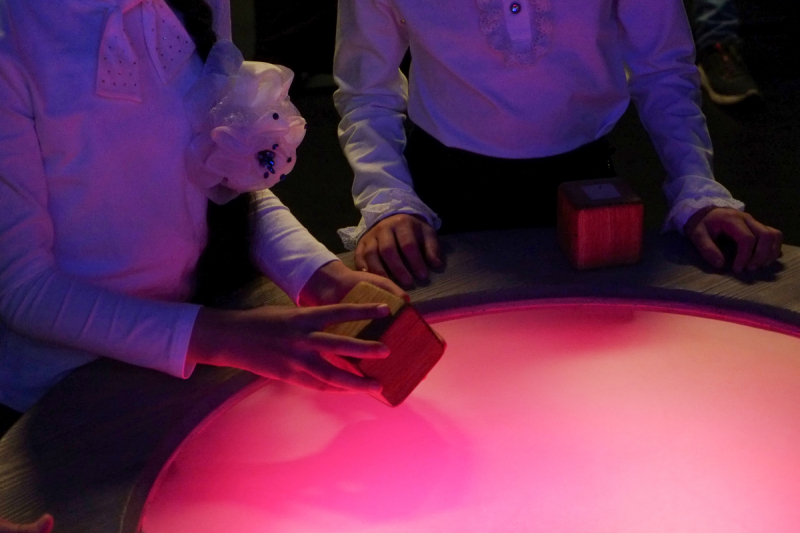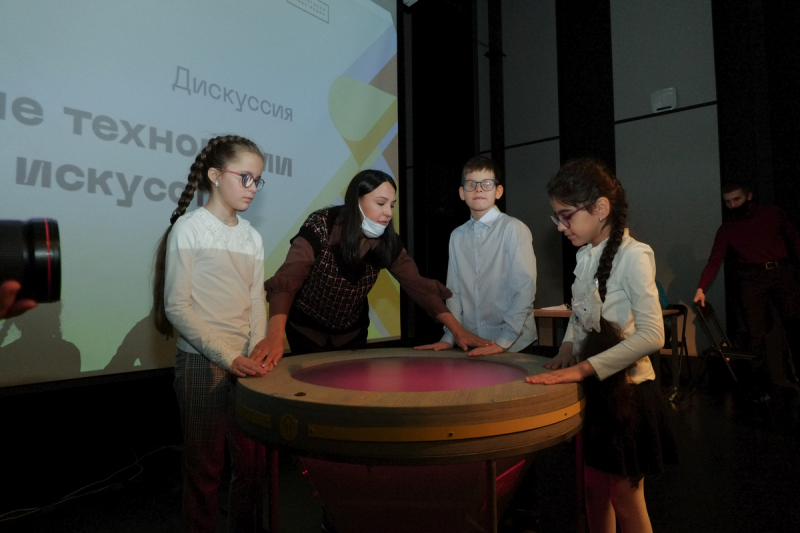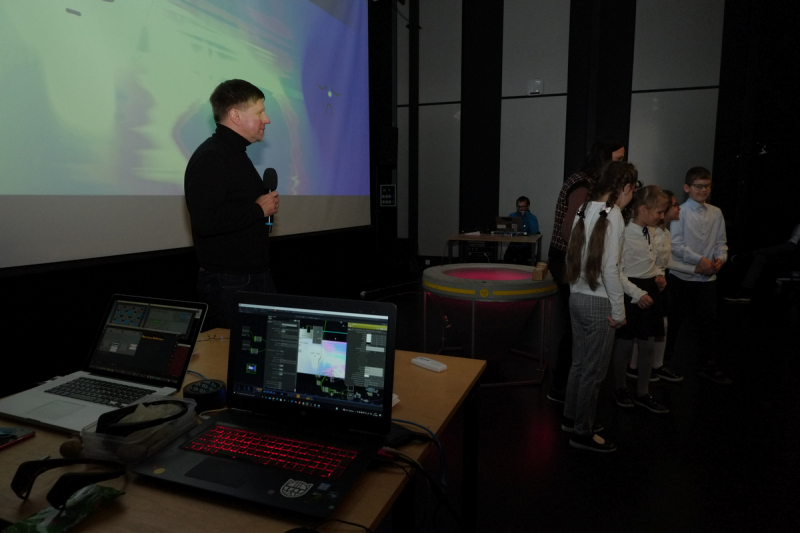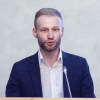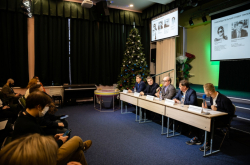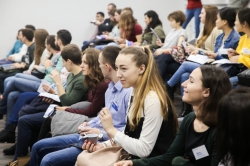The performance was delivered by students of the Konstantin Grot boarding school for the visually impaired. Together with their psychologist-slash-tutor, they told their personal stories to the accompaniment of music they wrote themselves.
In that endeavor, they were assisted by Neurotafl, a unique interactive system designed specifically for children with visual impairments. By placing cube-shaped active elements onto the surface, the children can generate audio content out of pre-existing samples. Each sound pattern is unique: a built-in neural network adapts to each user to create their personalized narrative. The table can be interacted with via touch, too – the embedded vibromotors react to shapes drawn on it by moving a cube across the surface.
The system was designed by the team of the Neuroculture Lab, launched by Mikhail Klimovskiy, an ITMO ambassador and the project’s ideologist, and the staff of ITMO’s Center of Usability and Mixed Reality. Media artist Yury Didevich joined as a co-founder and architect. The table itself was designed by Master’s students of the Stieglitz State Academy of Art and Design. The project team also includes representatives of the Konstantin Grot boarding school for the visually impaired, the Peterfund foundation, the autonomous non-profit organization Digital Youth, and the Diana Gurtskaya Sociocultural Rehabilitation Center. The project is supported by a presidential grant for the development of civil society.
The Neuroculture Lab analyzes and employs the possibilities offered by new technologies to alleviate the difficulties faced by people with disabilities and encourage their personal growth and integration into society. As explained by the developers of Neurotafl, their project provides the right conditions for the development of emotional intelligence and abstract and creative thinking, allowing people with visual impairments to fulfill their full potential.
The device was tested over a six-month period at the Konstantin Grot boarding school for the visually impaired; one of the project’s conditions was that the first model of the device will remain at the school indefinitely. Interest in the technology was also expressed by the Diana Gurtskaya Sociocultural Rehabilitation Center – its staff plans to use it when working with children with visual or hearing impairments.
“It’s risky to reject such modern approaches. You need to try things, to experiment. Perhaps they will indeed result in new opportunities for children with disabilities. When this device was tested at our center, we saw that it allows children to create genuine works of art – which they could potentially even monetize. It could be an abstract painting, a sweatshirt print, or a musical composition: the full potential of this device is yet to be explored. But we know it holds a whole spectrum of possibilities,” says Fedor Molkov, the head of the Diana Gurtskaya Sociocultural Rehabilitation Center.
Fedor Molkov. Photo by Ekaterina Shevyreva / ITMO.NEWS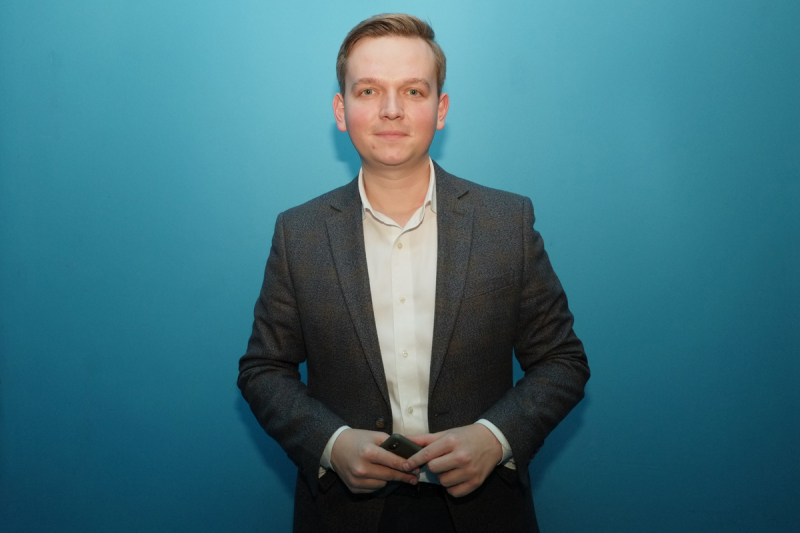
The technology does offer a wide range of applications: it has potential as an entertainment center or a creative outlet, even for people without disabilities. For instance, it could be used to treat depression, anxiety, and stress in adults:
“The device is based on the so-called cross-modal interaction. When a certain stimulus, such as the movement of the cube, generates a certain sound, it activates a certain area of the brain. This way, we can influence certain areas responsible for movement – if we’re talking about people with walking or movement impairments. Or areas that are responsible for empathy, emotional intelligence, abstract thinking, etc. So far it’s just a hypothesis, but I hope we’ll be able to prove it,” explains Mikhail Klimovskiy, the head of the Neuroculture Lab.
Mikhail Klimovskiy. Photo by Ekaterina Shevyreva / ITMO.NEWS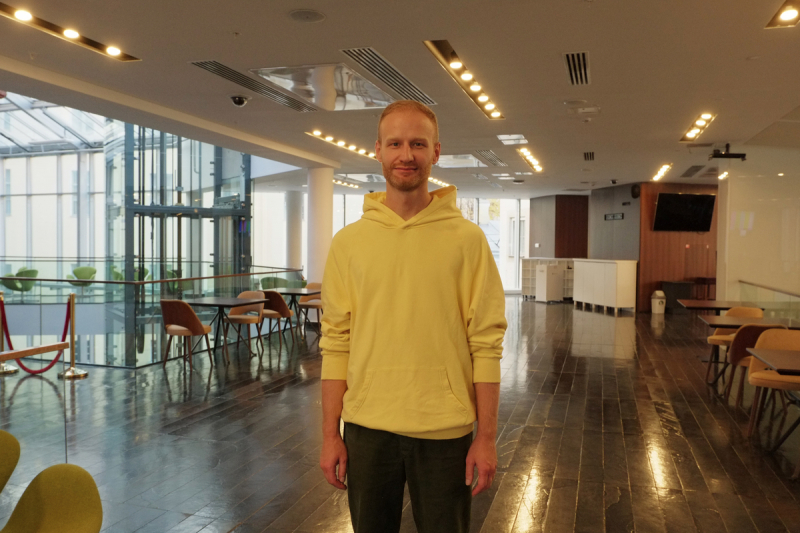
He adds that the six months of studies at the Konstantin Grot school have provided researchers with quantifiable data on the children’s psychological state. It shows that their anxiety and stress levels have lowered throughout the period.
Following the performance at the Alexandrinsky Theatre, a public discussion was held. The participants discussed the use of modern technologies in overcoming social barriers, as well as new inclusive methods in art, culture, and education. Experts shared their experience: Fedor Molkov, the head of the Diana Gurtskaya Sociocultural Rehabilitation Center, talked about the organization’s working process, what it allows children and adults with disabilities to do and learn, and how the staff make children’s dreams come true.
Nina Mikhaliuk, the executive director of Alma Mater Foundation, shared her experience in organizing inclusive cultural projects such as performances, stage plays, and exhibitions. Social entrepreneur Anatolii Morshovich, the founder of the social project Мир на ощупь (World by Touch), explained how he organizes work parties for his staff with visual impairments. And Irina Sokolova, the founder of the Da! animation studio, spoke on the intricacies of working with children with disabilities and children from boarding schools and crisis centers.
An open talk followed the performance on the New Stage of the Alexandrinsky Theatre. Photo by Ekaterina Shevyreva / ITMO.NEWS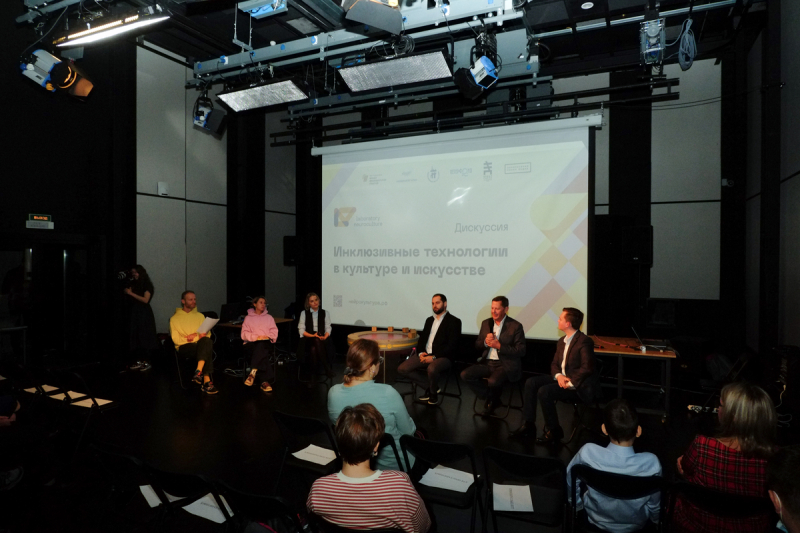
Vladimir Vasilyev, the Rector of ITMO University, talked about the conditions for people with disabilities at modern Russian universities. He mentioned that ITMO, like many other Russian universities, is not only home to special departments for inclusive education, but also aims to foster a welcoming environment in which students with disabilities can unlock their full potential. As one example, he cited the work of Denis Goncharov, an ITMO student who designed a unique guitar for people with disabilities.
